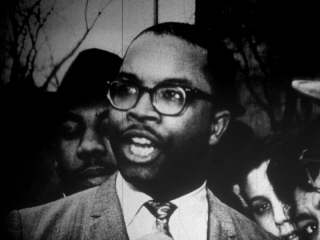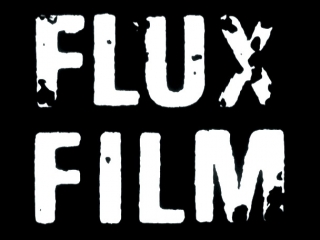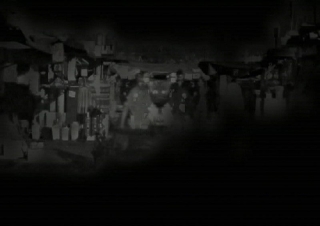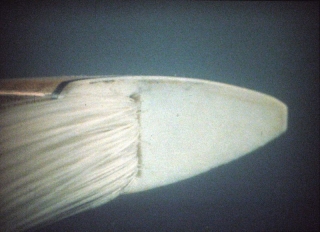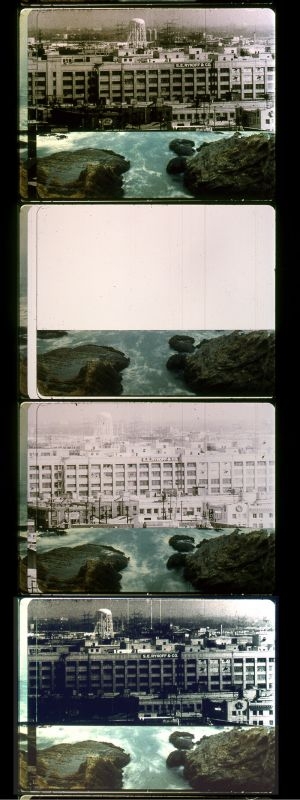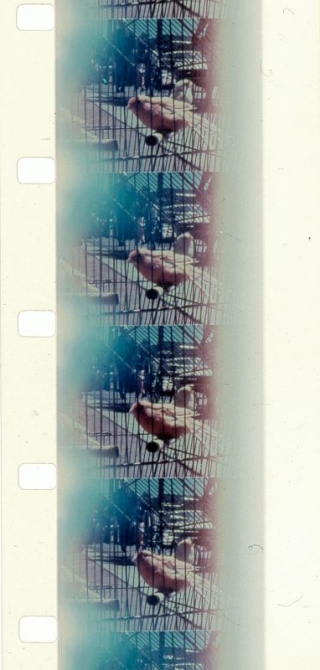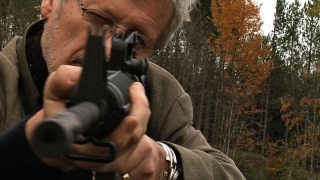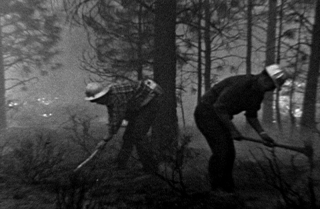Legendary artist-filmmaker Jonas Mekas presents Flux Party featuring the complete Fluxus film anthology as assembled by George Maciunas, rare Fluxus audio and a few surprises. This special late night screening on the big screen of East London’s splendid art deco picture palace includes films by George Brecht, Dick Higgins, Yoko Ono, Nam June Paik, Paul Sharits and Wolf Vostell. Jonas Mekas will be in attendance to discuss Fluxus and his friend and fellow Lithuanian émigré, the late George Maciunas, and Ben Vautier will show rare Fluxus performance footage.
Curated by Mark Webber and Anne-Sophie Dinant. Organised by the South London Gallery.
JONAS MEKAS PRESENTS FLUX PARTY
Friday 17 October 2008, 11:15pm til late
London Rio Cinema
Legendary artist-filmmaker Jonas Mekas presents Flux Party featuring the Fluxfilm Anthology as assembled by George Maciunas, rare Fluxus audio and surprise performances. Drinks and Fluxcakes will be served.
Fluxus was a provocative and humorous art movement that produced objects, performances and events which challenged the boundaries between traditional art and everyday life. Early Fluxus pieces included feeding a bale of hay to a piano, a painting to be stepped on, or the sound of dripping water.
The Fluxfilm Anthology, showing here in its most comprehensive version to date, includes Zen for Film (clear film for collecting dust), Four (Yoko Ono’s infamous film of bare bottoms), Smoking (cigarette smoke shot with a high speed camera) and other films of comical street performances, counting games, x-ray movies and interference patterns. The Fluxfilms embodied the minimal aesthetic, playfulness and poetic dimensions of Fluxus and transposed its performative aspects into the cinema.
This informal late night event is a unique chance to see films by artists such as George Brecht, John Cale, Dick Higgins, Yoko Ono, Nam June Paik, Paul Sharits, Chieko Shiomi, Ben Vautier, Wolf Vostell and Robert Watts presented on the big screen of the Rio Cinema, East London’s splendid art deco picture palace. Jonas Mekas will be present to discuss Fluxus and his friend and fellow Lithuanian émigré, the late George Maciunas.
Seminal figures of the New York downtown art scene since the beginning of the 1960s, Jonas Mekas (b.1922) and George Maciunas (1931-78) were connected through many different projects. Mekas was a central force of the avant-garde film scene and presented early screenings at Maciunas’ AG Gallery. Maciunas coordinated Fluxus as an international community of artists, whose contributors also included Joseph Beuys, Henry Flynt, Takehisa Kosugi, John Lennon and La Monte Young.
Maciunas was also fundamental in the emergence of SoHo as an artistic centre in New York. As early as 1966, he began to purchase dilapidated industrial buildings and convert them into cooperative real estate, starting the trend for loft style living. Jonas Mekas was one of the first to participate in the Fluxhouse venture, acquiring space for both his own home and the Filmmakers’ Cinematheque / Anthology Film Archives.
Last year, Mekas returned to Lithuania to inaugurate the Jonas Mekas Visual Arts Center in Vilnius, presenting his own Fluxus collection to the public for the first time in a joint Mekas / Maciunas exhibition. The centre is planning an extensive film archive and a Fluxus Research Institute. In 2009, Mekas will act as the Ambassador of Vilnius during its year as the European Capital of Culture.
Curated by Anne-Sophie Dinant and Mark Webber. Presented by the South London Gallery. With thanks to Benn Northover, Serpentine Gallery, Re:Voir and the Rio Cinema.
FLUXFILM ANTHOLOGY
The most complete known version of the Fluxfilm Anthology.
Fluxfilm No. 1: Zen For Film, Nam June Paik, 1964, 20 min
“Clear film, accumulating in time dust and scratches.”
Fluxfilm No. 2: Invocation of Canyons and Boulders, Dick Higgins, 1966, 3 min version.
“Mouth, eating motions.”
Fluxfilm No. 3: End After 9, George Maciunas, 1966, 1 min
“Word & number gag, no camera.”
Fluxfilm No. 4: Disappearing Music For Face, Chieko Shiomi, 1966, 10 min
“Transition from smile to no-smile, shot at 2000fr/sec. Camera shows only a CU of the mouth area.” Camera: Peter Moore
Fluxfilm No. 5: Blink, John Cavanaugh, 1966, 5 min
“Flicker: White and black alternating frames.”
Fluxfilm No. 6: 9 Minutes, James Riddle, 1966, 9 min
“Time counter, in seconds and minutes.”
Fluxfilm No. 7: 10 Feet, George Maciunas, 1966, 13 sec
“Prestype on clear film measuring tape, 10ft. length. No camera. At the end of every foot of film numbers appear, 1, 2, etc to 10.”
Fluxfilm No. 8: 1000 Frames, George Maciunas, c.1966, 42 sec
“Numerals on clear film from 1 to 1000.”
Fluxfilm No. 9: Eyeblink, Yoko Ono, 1966, 1 min
“High speed camera, 200fr./sec. view of one eyeblink.” Camera: Peter Moore
Fluxfilm No. 10: ENTRANCE to EXIT, George Brecht, 1966, 7 min
“A smooth linear transition from white, through greys to black, produced in developing tank. The ‘door sign’ ENTRANCE fades in, white letters on the black background, stays for a few seconds, then slowly fades into white. Five-minute fade into black and the title EXIT, which stays for a few seconds then fades into white.”
Fluxfilm No. 11: Trace No. 22, Robert Watts, 1965, 1 min
“X-ray sequence of mouth and throat; eating, salivating, speaking.”
Fluxfilm No. 12: Trace No. 23, Robert Watts, 1966, 3 min
“Begins with a shot of a demarcation line on an asphalt tennis court. A hand points to the distant landscape, then numbers 408 and 409 appear on a female torso. The female then passes different decorated plastic hot dogs, banana shapes suggestively between her legs, through her arm pits, etc. Ends with an egg floating on water.”
Fluxfilm No. 13: Trace No. 24, Robert Watts, 1966, 3 min
“Begins with a picture of Marilyn Monroe, then shifts to a female body, shot from belly button down, which is wriggling under piles of cellophane.”
Fluxfilm No. 14: One, Yoko Ono, 1966, 5 min
“High speed camera 2000fr/sec. match striking fire.” Camera: Peter Moore.
Fluxfilm No. 15: Eye Blink, Yoko Ono, 1966, 1 min
“Same as No. 9, probably.” Camera: Peter Moore.
Fluxfilm No. 16: Four, Yoko Ono, 1967, 6 min
“Sequences of buttock movement as various performers walked. Filmed at constant distance.” With Susanna Campbell, Philip Corner, Anthony Cox, Bici Hendricks, Geoffrey Hendricks, Kyoko Ono, Yoko Ono, Ben Patterson, Jeff Perkins, Susan Polang, Jerry Sablo, Carolee Schneemann, James Tenney, Pieter Vanderbiek, Verne Williams. Camera: Jeff Perkins, Anthony Cox.
Fluxfilm No. 17: 5 O’Clock in the Morning, Pieter Vanderbiek, 1966, 5 min
“A handful of rocks and chestnuts falling, filmed with high speed camera.” Camera: Peter Moore.
Fluxfilm No. 18: Smoking, Joe Jones, 1966, 6 min
“Sequence of cigarette smoke shot with high speed camera, 2000fr/sec.” Camera: Peter Moore.
Fluxfilm No.19: Opus 74, version 2, Eric Andersen, 1966, 1 min
“Single frame exposures, color. Different image each frame, various items in the room, etc.”
Fluxfilm No. 20: ARTYPE, George Maciunas, 1966, 4 min
“Artype patterns, intended for loops.” Benday dot patterns. Dots, lines. “Screens, wavy lines, parallel lines, etc. on clear film. No camera.”
Fluxfilm No. 22: Shout, Jeff Perkins, 1966, 3 min
“Close-ups of two faces, shouting at each other.” Starring Jeff Perkins and Anthony Cox. Camera: Yoko Ono.
Fluxfilm No. 23: Sun in Your Head, Wolf Vostell, 1963, 6 min
“Single Frame sequences of TV or film images, with periodic distortions of the image. The images are airplanes, women men interspersed with pictures of texts like: ‘silence, genius at work’ and ‘ich liebe dich.’ The end credit is ‘Television décollage, Cologne, 1963’.” Camera: Edo Jansen.
Fluxfilm No. 24: Readymade, Albert Fine, 1966, 45 sec
“Color test strip from developing tank.”
Fluxfilm No. 25: The Evil Faerie, George Landow, 1966, 30 sec
“A man on the roof making flying gestures with his hands. Film is preceded by a picture of an object of ‘L’ shape shakingly moving. At the end of the film, image of ‘Kodak girl’ briefly appears.” With Steven M. Zinc.
Fluxfilm No. 26: Sears Catalogue 1-3, Paul Sharits, 1965, 28 sec
“Pages from Sears catalogue, single frame exp.”
Fluxfilm No. 27: Dots 1 & 2, Paul Sharits, 1965, 46 sec
“Single frame exposures of dot-screens.”
Fluxfilm No. 28: Wrist Trick, Paul Sharits, 1965, 28 sec
“Various gestures of hand held razorblade, single frame exposures.”
Fluxfilm No Number: Unrolling Event, Paul Sharits, 1965, 5 sec
“Toilet paper event, single frame exposures.”
Fluxfilm No. 29: Word Movie, Paul Sharits, 1965, 4 min
“Single frame exposures of words, color.”
Fluxfilm No. 30: Dance, Albert Fine, 1966, 2 min
“Face Smiling. Hammering a brick. CU of an ear (moving?). Face twitching. Dancing on one leg. Rolls, twitches on the floor. Boxes the wall.”
Fluxfilm No. 31: Police Car, John Cale, 1966, 1 min
“Underexposed sequence of blinking lights on a police car.”
Fluxfilm No. 36: Fluxfilm No. 36, Peter Kennedy & Mike Parr, 1970, 3 min
“Tips of feet walking at the edge of frame, all around the frame.”
Fluxfilm No. 37: Fluxfilm No. 37, Peter Kennedy & Mike Parr, 1970, 2 min
“Face going out of focus by layering sheets of plastic between camera and subject.”
Fluxfilm No. 38: Jen e vois rien Je n’entends rien Jen e dis rien, Ben Vautier, 1965, 5 min
“Seeing, Hearing, Saying Nothing. Ben stands with ears, eyes, mouth bandaged.”
Fluxfilm No. 39: La traverse du port de Nice á la nage, Ben Vautier, 1963, 2 min
“Swimming across Nice harbour fully clothed. Ben swims across a bay in Nice.”
Fluxfilm No. 40: Fair un effort, Ben Vautier, 1969, 2 min
“Lifting and holding up a chest of drawers.”
Fluxfilm No. 41: Regardez moi cela suffit, Ben Vautier. 1962, 3 min
“Sitting on a promenade in nice with a sign: Watch me, that’s all.
Back to top

